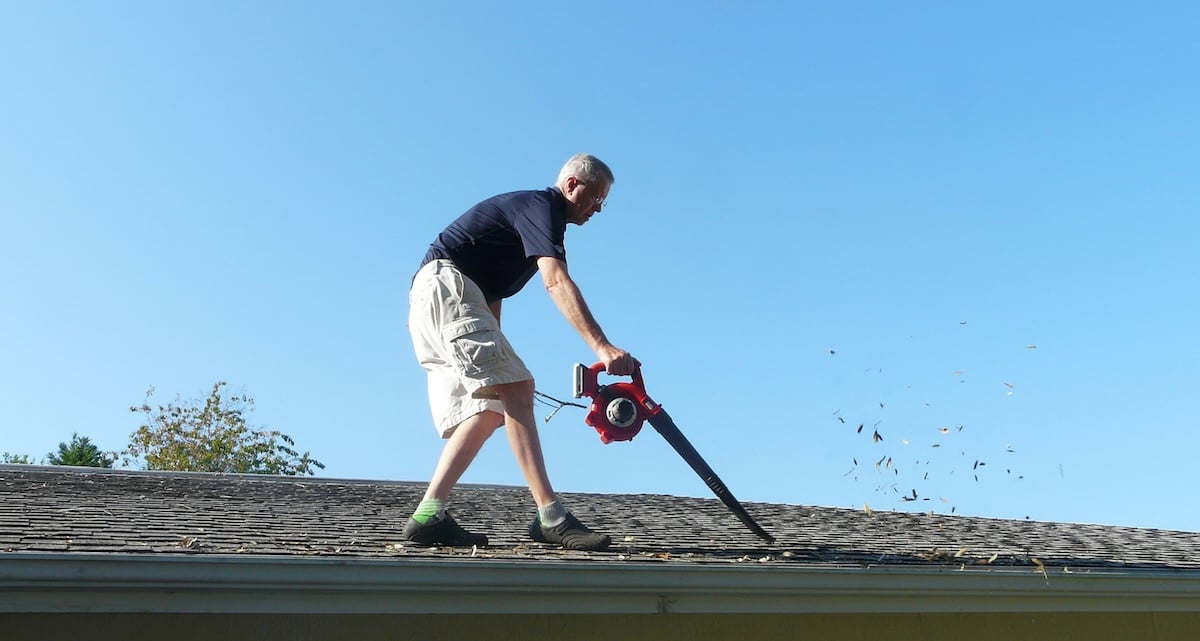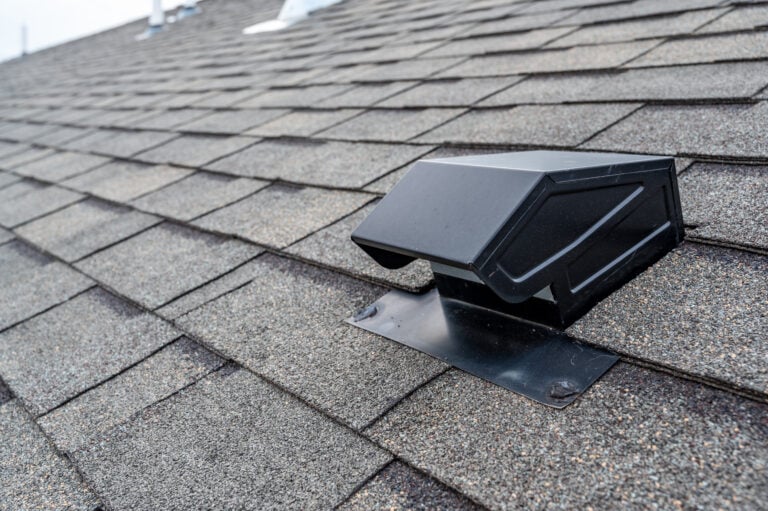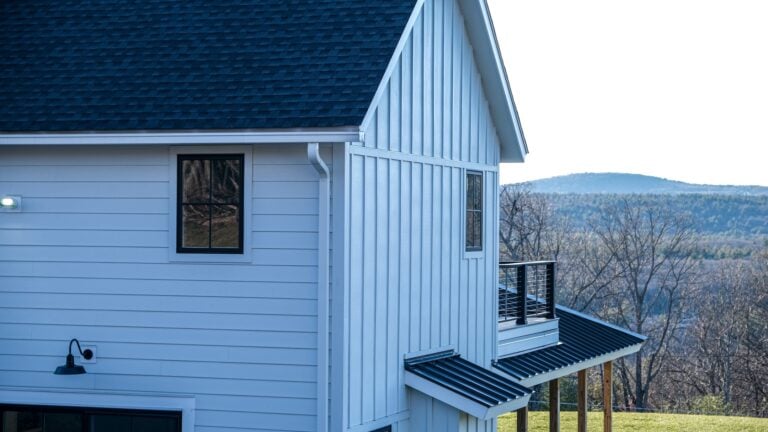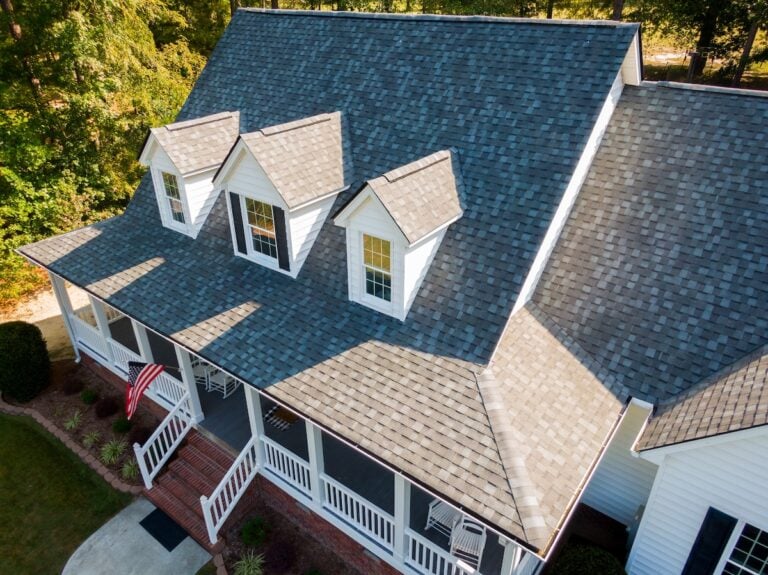A well-maintained roof is your home’s first line of defense against the elements. Regular cleaning not only extends your roof’s lifespan but also prevents costly repairs down the road. While many homeowners focus on interior maintenance, your shingle roof deserves equal attention to keep it functioning at its best.
This comprehensive guide will walk you through everything you need to know about how to clean a shingle roof safely and effectively. We’ll cover:
- Essential safety preparations and equipment needed
- Step-by-step cleaning procedures for different types of buildup
- When to tackle the job yourself versus calling professionals
- Preventive measures to keep your roof cleaner longer
👉 Understanding Your Shingle Roof
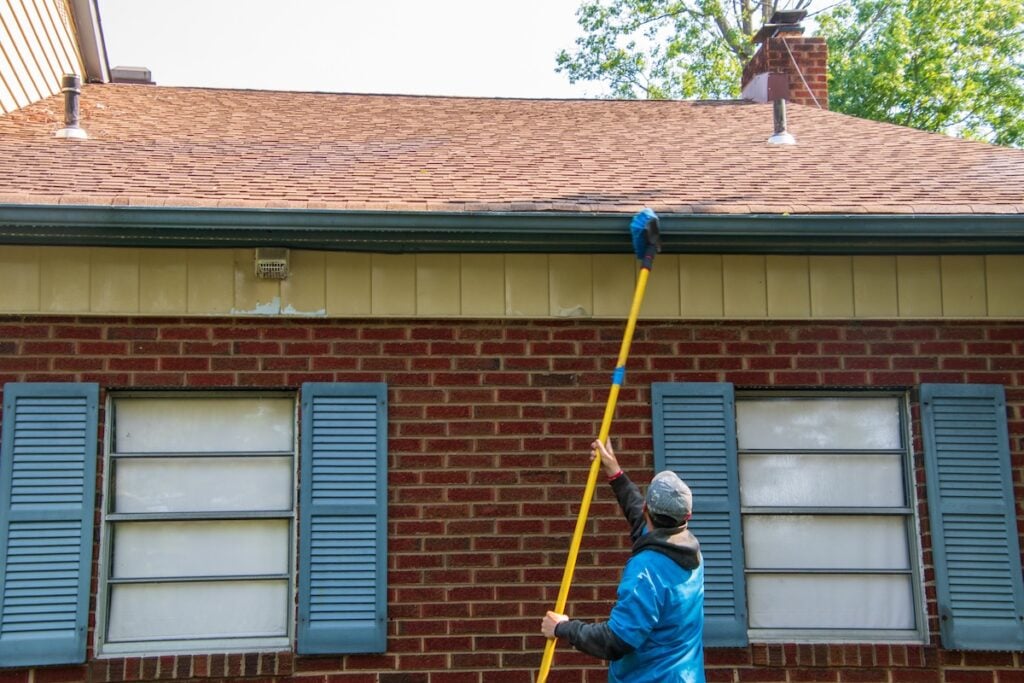
Before you begin cleaning, it’s important to understand what you’re working with. Asphalt shingles are the most common roofing material in North America, making up about 80% of residential roofs. These shingles consist of a fiberglass or organic mat base, coated with asphalt and topped with mineral granules that provide protection and color.
The granules on your shingles serve multiple purposes. They protect the asphalt from UV rays, provide fire resistance, and give your roof its color and texture. When cleaning, preserving these granules is crucial since excessive scrubbing or harsh chemicals can cause them to loosen and wash away, reducing your roof’s effectiveness.
Common Roof Contaminants
- Algae: Appears as dark streaks, especially on north-facing slopes, and feeds on the limestone filler in asphalt shingles.
- Moss: Grows in damp, shaded areas and can lift shingle edges if not addressed.
- Lichen: A mix of algae and fungus that forms crusty patches, making it difficult to remove.
- Debris: Leaves, branches, and other organic material accumulate in valleys and near gutters.
🛠️ Tools and Materials You’ll Need
- Use a garden or pump sprayer to apply cleaning solutions evenly without excessive pressure.
- Choose soft-bristled brushes to remove buildup without damaging shingle granules.
- A garden hose with an adjustable nozzle provides enough water pressure for rinsing; avoid pressure washers to prevent shingle damage.
- Remove loose debris with a leaf blower or soft brush before washing.
✅ 6 Step Cleaning Process
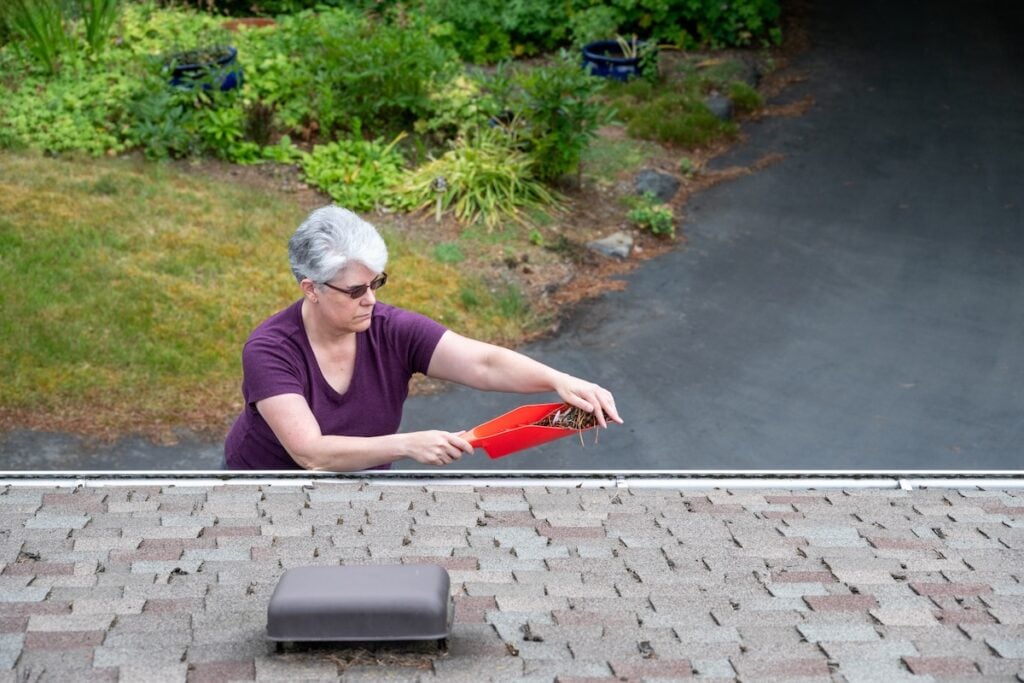
A step-by-step cleaning process ensures tasks are completed thoroughly and efficiently. It provides clear guidance, reducing mistakes and saving time.
1. Remove Loose Debris
Start your asphalt roof shingle cleaning process by removing all loose debris. Use a leaf blower or soft brush to clear leaves, twigs, and other organic matter from the entire roof surface. Pay special attention to valleys, areas around chimneys, and spots where debris typically accumulates.
Work systematically from the ridge down to the gutters, ensuring you don’t miss any areas. This initial cleaning prevents debris from interfering with your washing process and helps you identify problem areas that need special attention.
2. Protect Surrounding Areas
Before applying any cleaning solutions, protect your landscaping and exterior surfaces. Cover plants, bushes, and grass with plastic sheeting or tarps. Wet down surrounding vegetation with plain water to dilute any cleaning solution that might reach them.
Remove or cover outdoor furniture, decorations, and any items that could be damaged by cleaning solutions. Close windows and doors to prevent solutions from entering your home.
3. Apply Cleaning Solution
Using your sprayer, apply the cleaning solution starting from the bottom of the roof and working upward. This prevents streaking and ensures even coverage. Apply the solution generously to areas with visible algae, moss, or staining.
Allow the cleaning solution to sit for the recommended time, typically 15-20 minutes for most products. Avoid letting the solution dry completely on the shingles, as this can cause damage or leave residue.
4. Gentle Scrubbing
For stubborn areas, use a soft-bristled brush to gently scrub the affected spots. Work in the direction of the shingle tabs, never against them, to avoid lifting or damaging the clean roof shingles. Apply minimal pressure—let the cleaning solution do most of the work. This is why you should avoid pressure washing or power washing when possible.
Focus on areas with heavy moss or lichen buildup, but be patient. Multiple treatments may be necessary for complete removal, especially for thick moss growth.
5. Thorough Rinsing
Rinse the entire roof thoroughly with clean water, starting from the top and working down. Ensure all cleaning solution is completely removed, as residue can continue to bleach the asphalt shingle roof or harm surrounding vegetation. Pay extra attention to gutters and downspouts to flush out any debris or cleaning solution.
6. Final Inspection and Touch-ups
After the roof has dried, inspect your work from the ground using binoculars if necessary. Look for any missed spots or areas that need additional treatment. Some staining may require a second application, particularly in heavily shaded areas where algae and moss are more persistent.
👨🔧 When to Call Professionals
While many homeowners can successfully clean their own roofs, certain situations require professional expertise. If your roof is particularly steep (greater than 6/12 pitch), has multiple levels, or you’re uncomfortable with heights, professional roof cleaning is the safer choice.
Extensive moss growth, damaged or loose shingles, or the presence of asbestos in older roofing materials also warrant professional attention. Additionally, if you notice any structural issues, leaks, or damaged flashing during your inspection, contact a qualified roofing contractor immediately.
Professional Equipment and Expertise
Professional roof cleaning services have specialized equipment and training that enable them to clean roofs more efficiently and safely. They use low-pressure systems specifically designed for roof cleaning and have access to commercial-grade cleaning solutions that aren’t available to consumers.
Professionals also carry insurance to protect both themselves and your property in case of accidents or damage. They can identify potential roofing problems during the cleaning process and provide recommendations for maintenance or repairs.
💡 Preventive Maintenance Tips
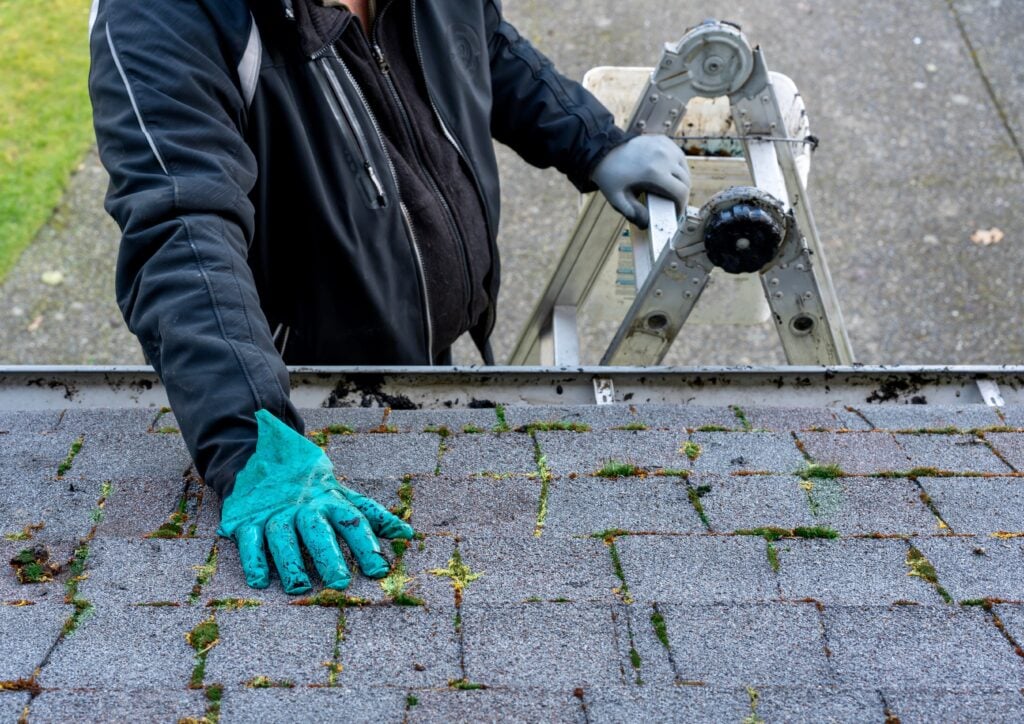
Regular maintenance helps keep your roof cleaner longer and extends the time between deep cleanings. Trim tree branches that hang over your roof to reduce shade and debris accumulation. Good air circulation helps prevent moisture buildup that encourages algae and moss growth.
Keep gutters clean and properly functioning to ensure water drains away from your roof efficiently. Clogged gutters can cause water to back up and create ideal conditions for organic growth.
Ongoing Inspection Schedule
Inspect your roof at least twice yearly, preferably in spring and fall. Look for signs of algae, moss, or debris accumulation, as well as any damaged or missing shingles. Early intervention prevents small problems from becoming major issues.
Consider applying moss and algae prevention products annually in areas prone to growth. These treatments create an inhospitable environment for organic growth and can significantly extend the time between cleanings.
🏠 Trust the Experts at Best Exteriors
Learning how to clean a shingle roof is valuable knowledge for any homeowner, but knowing when to call professionals is equally important. At Best Exteriors, we understand that your roof is a significant investment that deserves expert care and attention.
Don’t let algae, moss, or debris compromise your roof’s performance and curb appeal. Contact Best Exteriors today for a free consultation and discover why Columbus homeowners trust us with their most important investment—their home’s protection.
